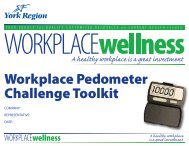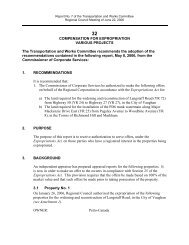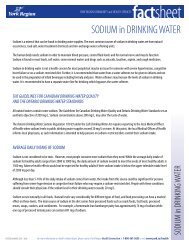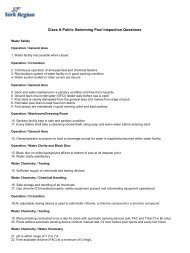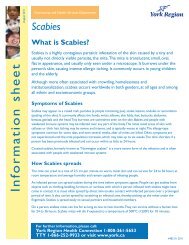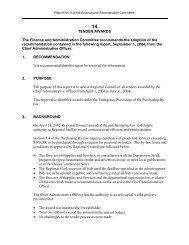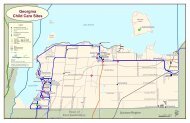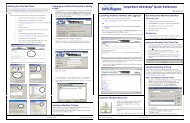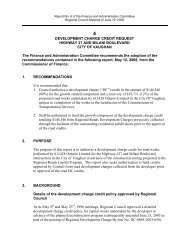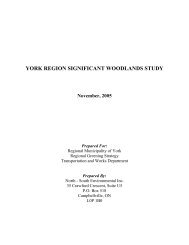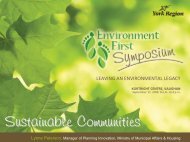Changing Landscapes: Recent Immigrants Living in York Region
Changing Landscapes: Recent Immigrants Living in York Region
Changing Landscapes: Recent Immigrants Living in York Region
Create successful ePaper yourself
Turn your PDF publications into a flip-book with our unique Google optimized e-Paper software.
» As of 2006, visible m<strong>in</strong>orities represented<br />
72 per cent (33,235 of the 46,465) of the recent<br />
immigrant population liv<strong>in</strong>g <strong>in</strong> <strong>York</strong> <strong>Region</strong>.<br />
The top visible m<strong>in</strong>ority groups of recent<br />
immigrants liv<strong>in</strong>g <strong>in</strong> <strong>York</strong> <strong>Region</strong> <strong>in</strong> 2006 were<br />
Ch<strong>in</strong>ese (31 per cent), South Asian (28 per cent)<br />
and West Asian (12 per cent).<br />
» While Ch<strong>in</strong>ese rema<strong>in</strong>ed the largest visible<br />
m<strong>in</strong>ority group of recent immigrants who lived<br />
<strong>in</strong> <strong>York</strong> <strong>Region</strong>, it dropped significantly to<br />
31 per cent <strong>in</strong> 2006 from 52 per cent <strong>in</strong> 2001.<br />
» The largest groups of visible m<strong>in</strong>orities among<br />
recent immigrants <strong>in</strong> <strong>York</strong> <strong>Region</strong>’s five local<br />
municipalities <strong>in</strong> 2006 were:<br />
» Korean <strong>in</strong> Aurora (22 per cent)<br />
» Ch<strong>in</strong>ese <strong>in</strong> Markham (43 per cent)<br />
» Ch<strong>in</strong>ese <strong>in</strong> Newmarket (22 per cent)<br />
» West Asian <strong>in</strong> Richmond Hill (30 per cent)<br />
» South Asian <strong>in</strong> Vaughan (35 per cent)<br />
Percentage of <strong>Recent</strong> <strong>Immigrants</strong><br />
» <strong>York</strong> <strong>Region</strong> had the third largest proportion of<br />
recent immigrants who were visible m<strong>in</strong>orities<br />
(72 per cent) across the GTA municipalities, after<br />
Peel (90 per cent) and Toronto (81 per cent).<br />
Figure 6: Visible M<strong>in</strong>ority Status of <strong>Recent</strong> Immigrant Population, Canada, Ontario and GTA Municipalities, 2006<br />
100%<br />
90%<br />
80%<br />
70%<br />
60%<br />
50%<br />
40%<br />
30%<br />
20%<br />
10%<br />
0%<br />
25.0%<br />
21.7%<br />
28.5%<br />
19.0%<br />
10.4%<br />
37.7%<br />
75.0% 78.3% 71.5% 81.0% 89.6% 62.3% 69.9%<br />
<strong>Chang<strong>in</strong>g</strong> <strong>Landscapes</strong>: <strong>Recent</strong> <strong>Immigrants</strong> <strong>Liv<strong>in</strong>g</strong> <strong>in</strong> <strong>York</strong> <strong>Region</strong><br />
30.1%<br />
Canada Ontario <strong>York</strong> Toronto Peel Halton Durham<br />
Source: Statistics Canada, 2006 Census, Custom Tabulations.<br />
Canada, Ontario and GTA Municipality<br />
Non-Visible M<strong>in</strong>ority Visibile M<strong>in</strong>ority<br />
20



